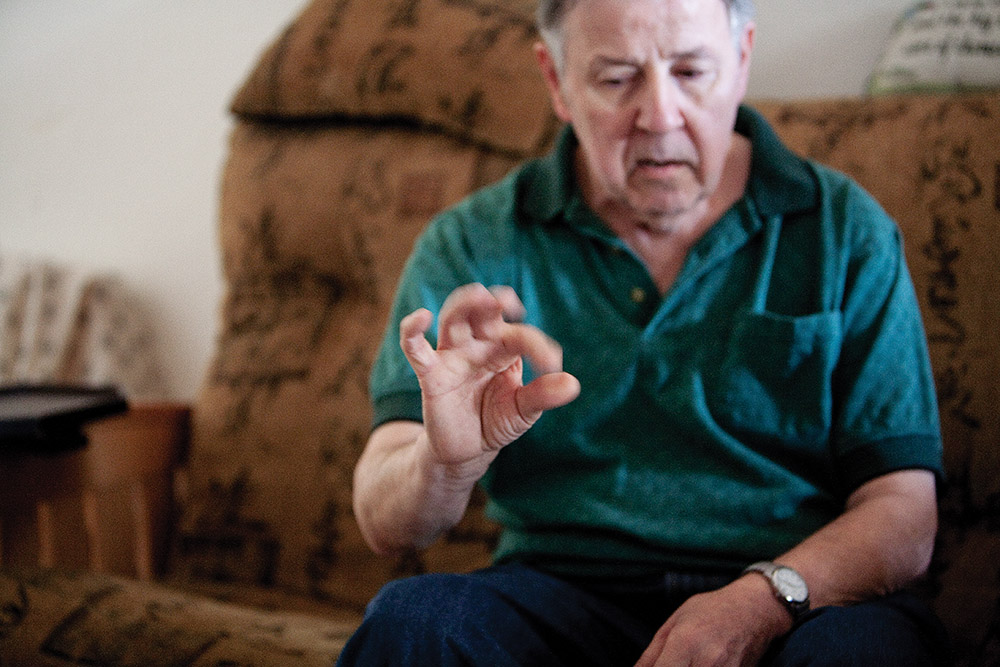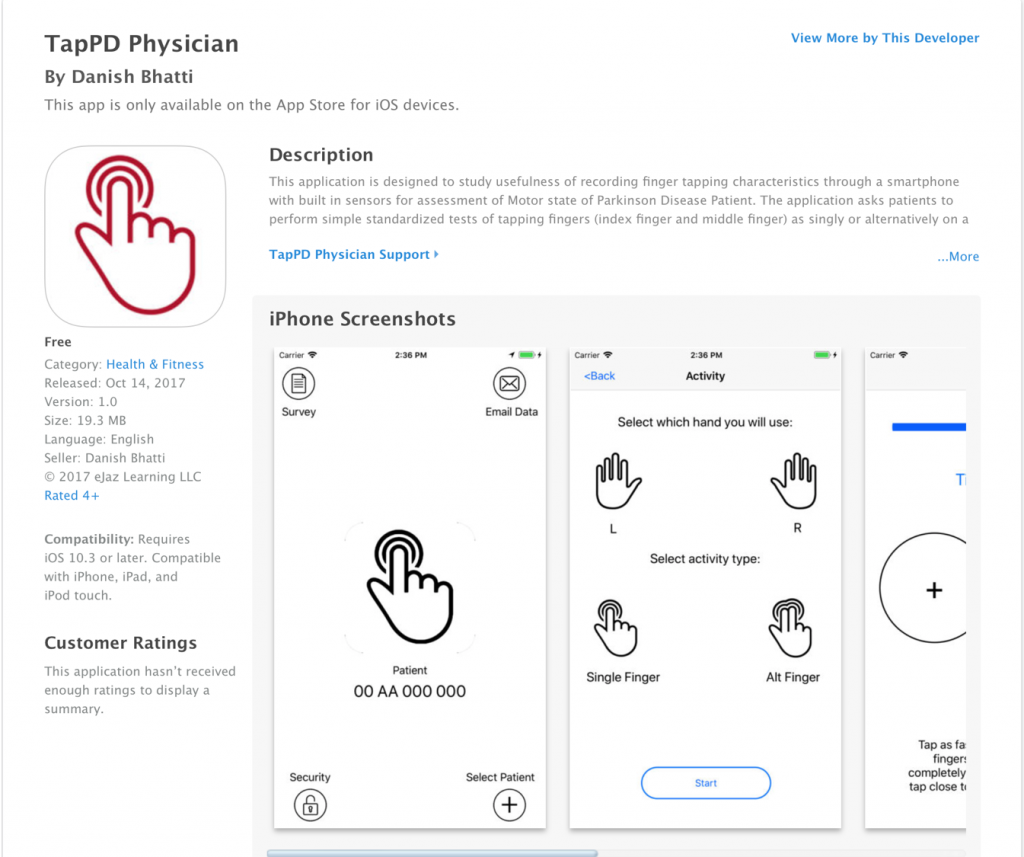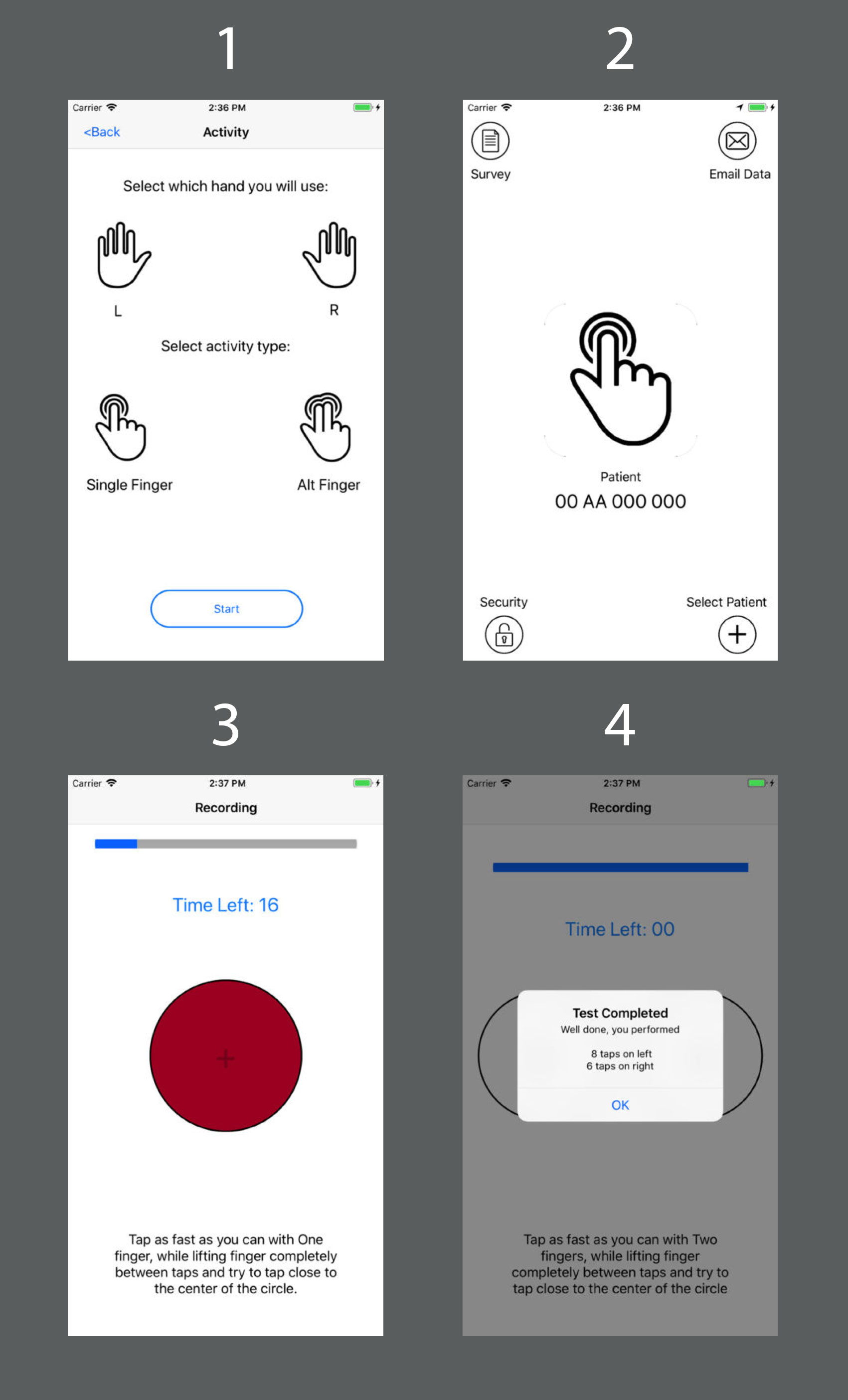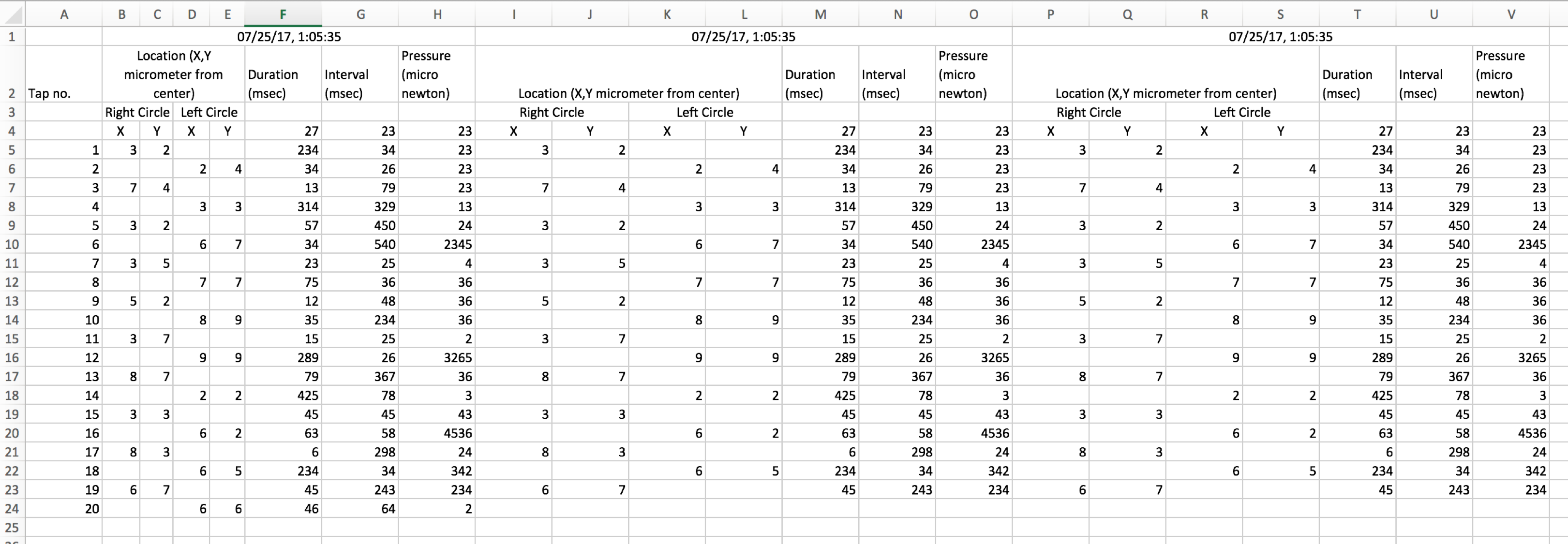
Most common evaluations of Parkinson’s disease (PD) in the clinic consist of motor assessments using some form of repetitive task. One such tool is use of a Unified Parkinson’s Disease Rating Scale or UPDRS which involves multiple different activities such as repetitive finger tapping with first finger and thumb as fast as possible. The clinician observes for any slowing or decreasing amplitude or any irregularity with freezing of the movement.
Since the original description of Parkinson’s disease, the assessment of PD has relied heavily on clinical observation and requires significant detailed training of the neurologist to become good and effective in performing these assessments. The modern technology provides us possibilities of creating digital versions of these assessment. This will not only increase the sensitivity and efficiency of doing these assessments but would also make them reliable so that significant amount of training is not needed and thus available even to an untrained physician. This also opens up the possibility of performing these assessments at home by the patients themselves and sending them electronically to their physicians or providers and keeping track of these assessments as a daily measurement over the long run rather than being assessed once every few months in the physician’s office just like fitbit. One of the easiest and reliable measure of the motor performance of PD is Finger tapping assessment using digital tools. Keeping that in mind, the movement disorder neurologist at University of Nebraska Medical Center (UNMC) created a smartphone application taking advantage of the sensitive touch technology of an iPhone to measure various components or characteristics of finger tapping of Parkinson’s patient.
 TapPD is a simple application that provides a circle on a screen with a cross in the center to the patient for tapping for 20 seconds, repetitively as fast as possible. The tapping is done with one finger at a time and also alternate tapping with index finger and middle finger for each side. The app measures the characteristics of Finger tapping such as time interval between each tap, the time that the fingers stayed on the screen for each tap and thus picking up freezing and also gradually decrement or slowing of the movements with repetitive movements. In addition, it looks for the accuracy of finger tap as distance from the circle center. UNMC will be launching studies using this application over the next few months looking at its effectiveness and correlation with the clinical assessment. One such ongoing study is linking real life driving changes in PD with finger tapping app to look at the motor state of patient as they drive every day. Similarly collaboration between UNMC and Biomechanics experts at University of Nebraska at Omaha (UNO) is looking at comparing the changes in finger tapping with walking or gait. They will also be evaluating the comparison between the finger tapping characteristics and UPDRS in each clinical visit to see if we can find correlations that are useful. We will be hopefully updating our readers in the future with interesting findings from these projects further or new project design using this application and the outcome from these studies. This application is available for free on iTunes store as TapPD_Physician and TapPD_Patient. The application is being shared for free with other researchers across the country or in order to promote research of this kind.
TapPD is a simple application that provides a circle on a screen with a cross in the center to the patient for tapping for 20 seconds, repetitively as fast as possible. The tapping is done with one finger at a time and also alternate tapping with index finger and middle finger for each side. The app measures the characteristics of Finger tapping such as time interval between each tap, the time that the fingers stayed on the screen for each tap and thus picking up freezing and also gradually decrement or slowing of the movements with repetitive movements. In addition, it looks for the accuracy of finger tap as distance from the circle center. UNMC will be launching studies using this application over the next few months looking at its effectiveness and correlation with the clinical assessment. One such ongoing study is linking real life driving changes in PD with finger tapping app to look at the motor state of patient as they drive every day. Similarly collaboration between UNMC and Biomechanics experts at University of Nebraska at Omaha (UNO) is looking at comparing the changes in finger tapping with walking or gait. They will also be evaluating the comparison between the finger tapping characteristics and UPDRS in each clinical visit to see if we can find correlations that are useful. We will be hopefully updating our readers in the future with interesting findings from these projects further or new project design using this application and the outcome from these studies. This application is available for free on iTunes store as TapPD_Physician and TapPD_Patient. The application is being shared for free with other researchers across the country or in order to promote research of this kind.
Read More about this app here : https://appadvice.com/app/tappd-physician/1287516703
Here how it works:

Analysis of Finger-Tapping Performance:





